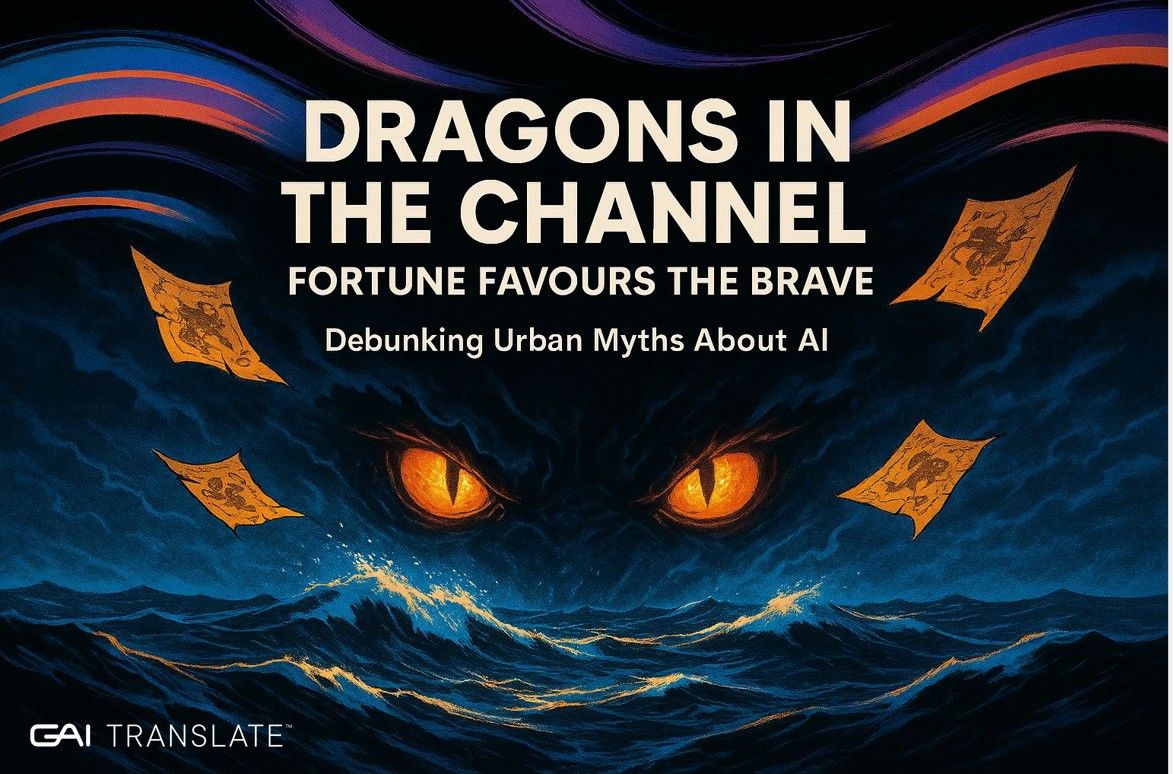The recent executive order shifts federal mandates, but smart companies know true success in diverse America demands more than just English. Ignoring this reality comes with steep legal, reputational, and financial costs.
On 1 March 2025, President Donald Trump signed Executive Order 14224, officially designating English as the national language of the United States. This move, a direct reversal of President Bill Clinton’s 2000 mandate for federal agencies to provide extensive language assistance, might, at first glance, appear to offer US businesses newfound freedom from multilingual obligations.
The thinking might be: “Finally, we can simplify, streamline, and just focus on English.”
But this perception is profoundly misguided. While federal mandates for government agencies may have shifted, the business imperative for comprehensive multilingual communication in the United States remains not just relevant, but more critical than ever for the private sector. Companies that embrace an “English-only” mindset now face legal pitfalls, reputational damage, and lost market opportunities that could cost them millions.
The unseen costs of an “English-only” mindset for businesses
To understand the risk of having an “English-only” mindset, one must look beyond the federal directive and into how the American society operate.
1. The persistent shadow of legal & regulatory exposure
The federal executive order does not operate in a vacuum, nor does it erase all existing legal obligations.
- State and local laws remain: many states and local jurisdictions have their own language access requirements, especially in critical sectors like healthcare, housing, and public services. This means that despite the executive order that places pressure on local states to rescind their ‘multilingualism’, the ultimate authority comes down to the state governments themselves. An example is Alaska, which is home to 21 official languages, and Hawaii, which has recognised both English and Hawaiian as their official languages to this day.
- Longstanding civil rights law means businesses are shielded legally: Title VI of the Civil Rights Act of 1964, which prohibits discrimination based on national origin, of which language is one crucial section, still stands. Any private business receiving any form of federal financial assistance – direct or indirect – remains subject to Title VI. Cutting language services could directly expose these entities to costly discrimination lawsuits, investigations by the Department of Justice, or even the loss of federal funding. Think hospitals accepting Medicare, universities receiving grants, or social service agencies.
- Some industries are protected: Beyond general civil rights, specific industries are bound by their own non-discrimination and language access requirements. For example, Section 1557 of the Affordable Care Act mandates that healthcare providers receiving federal funds take reasonable steps to provide meaningful access to individuals with Limited English Proficiency (LEP). These specific legal frameworks pre-date the recent executive order and continue to demand robust language solutions.
2. Reputational damage: The erosion of trust in a diverse America
Here we delve into why Trump’s executive order does not mean businesses should give up languages entirely. In an era defined by consumer choice and social consciousness, a company’s public image is invaluable, and language is crucial to establishing the foreground of brand trust and loyalty.
- Negative public perception: How will a decision to scale back non-English services be perceived by a diverse customer base, employees, or the media? It risks being seen as discriminatory, uncaring, or simply out of touch with the reality of modern America.
- Social media backlash: In a social media dominated world, failure to showcase inclusivity can escalate into negative PR, social media boycotts, and widespread brand damage. The economic and reputational blow from such a backlash can be immediate and severe.
- Loss of brand loyalty: Trust is painstakingly built when customers feel seen, heard, and understood. When a business makes communication harder for a significant portion of the population, it directly undermines that trust, alienating existing loyal customers and creating an insurmountable barrier for new ones from diverse communities.
3. The chasm of lost market share & revenue opportunities
In addition to these risks, perhaps the most tangible cost of an “English-only” approach is the sheer economic opportunity forfeited.
- America’s lingual mosaic: According to the US Census Bureau, over 71 million US residents speak a language other than English at home. A significant portion of these individuals have limited English proficiency. Ignoring this demographic means ignoring a significant segment of the American consumer base.
- Untapped purchasing power: Multilingual communities wield considerable purchasing power. Businesses that fail to engage them in their preferred language are effectively leaving millions, if not billions, in potential revenue on the table, willingly ceding market share to more forward-thinking competitors.
- The competitive edge: In an increasingly competitive landscape, offering robust multilingual services is also a powerful competitive differentiator. Companies that continue to connect authentically with diverse communities will inevitably gain an insurmountable advantage.
4. Safety hazards & critical misunderstandings: When words fail, lives are at stake
Beyond legal and financial spreadsheets, the human cost of linguistic neglect can be catastrophic.
- Healthcare catastrophes: The medical field is rife with tragic examples. The infamous case of Willie Ramirez, who was left quadriplegic due to a mistranslation of “intoxicado” (meaning “poisoned” or “feeling ill from something ingested,” misinterpreted as “intoxicated”), leading to a multimillion-dollar lawsuit, serves as a stark reminder. In a clinical setting, an “English-only” policy could lead to incorrect diagnoses, improper treatment, or misunderstood medication instructions.
- Product safety & liability: For manufacturers, misinterpretations of safety warnings, operating instructions, or crucial product information in manuals can lead to serious injuries, product failures, and devastating legal liability.
- Workplace accidents: In diverse workforces, the inability of employees to fully comprehend critical safety protocols, emergency procedures, or equipment operation instructions due to language barriers directly contributes to workplace accidents, injuries, and subsequent legal claims.
How GAI Translate empowers businesses to thrive in a multilingual America
The solution isn’t to lament the policy shift, but to adapt and thrive. GAI Translate stands as the strategic partner for businesses ready to navigate this change.
We understand that true business success in this time of uncertainty demands proactive engagement with a diverse populace. GAI Translate offers comprehensive solutions that transform potential risks into tangible growth opportunities:
- Ensuring legal compliance: We provide precision, professional translations that help businesses adhere to the persistent state, local, and civil rights laws, mitigating exposure to costly lawsuits and regulatory penalties.
- Building reputation & trust: By enabling seamless communication across all languages, we help businesses cultivate an inclusive image, fostering deep trust and unwavering loyalty with their entire customer base.
- Enabling new market segments: Our expertise opens doors to the vast, underserved non-English speaking markets within the US, providing direct access to new customers and substantial revenue streams.
- Enhancing safety & operational efficiency: From accurate product manuals to critical workplace safety documents, we ensure clear, unambiguous communication for all, reducing errors and enhancing safety, and boosting overall productivity.
- The precision of human expertise, amplified by AI: GAI Translate utilises advanced AI for rapid, consistent initial translations, then pairs it with expert human linguists to deliver the accuracy and quality you need. This hybrid approach delivers both speed and precision, cost-effectively.
The executive order may signal a federal pivot, but for forward-thinking businesses, the message is clear: the future of commerce in America and the globe is inherently multilingual. Those who invest in comprehensive, professional translation and localisation services will remain relevant by achieving sustainable growth.
Partner with GAI Translate to turn potential risks into tangible growth opportunities.
Contact us today for a consultation on how to future-proof your business.
SHARE THIS ARTICLE
RELATED RESOURCES
What mining professionals should know when using a LLM versus GAI SLM for safety-related terminology
Responses generated by Large Language Models (LLMs) always carry a health warning; that results can contain errors. AI copes well translating generic content, but safety-related terminology is unforgiving. Any...
5 MIN READ
Busting the big 3 myths in AI adoption: what are you doing wrong with AI?
The conversation about adopting AI tools to translate is clouded by myths - myths that create risks and missed opportunities for global businesses. This week, Be the Business, an organisation that champions...
5 MIN READ
Certified vs. generic quality: why smart leaders choose certified translation to de-risk
The way we do business today has changed drastically. Companies are more digitised and interconnected. Organisations are facing greater risks at an increased velocity. The regulatory environment is becoming ever...
4 MIN READ
What mining professionals should know when using a LLM versus GAI SLM for safety-related terminology
Responses generated by Large Language Models (LLMs) always carry a health warning; that results can contain errors. AI copes well translating generic content, but safety-related terminology is unforgiving. Any...
5 MIN READ
Busting the big 3 myths in AI adoption: what are you doing wrong with AI?
The conversation about adopting AI tools to translate is clouded by myths - myths that create risks and missed opportunities for global businesses. This week, Be the Business, an organisation that champions...
5 MIN READ




